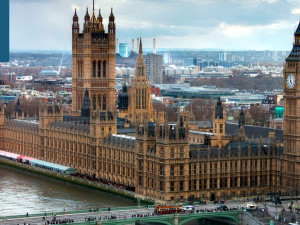
Johnson’s Brexit pledge pressures Sterling
Morning mid-market rates – The majors
June 26th: Highlights
- “Do or die” by October 31st
- Powell’s independence pledge dials back dollar losses
- Euro off highs as ECB in dovish mode
Johnson comes out fighting
There have been questions about how Johnson will achieve his goal with various actions both inside and outside Parliament designed to stymie such a move.
It has been said, more in hope than judgement, that the pledge to leave with or without a deal will be enough to force Brussels back to the negotiating table and that had been seen as Johnson’s main thrust.
However, rumours have been emerging that he intends to bypass Michel Barnier, the EU’s chief negotiator, and deal directly with German Chancellor Angela Merkel and impress upon her the effect of no deal on her country in particular. Merkel is seen as the most significant individual leader within the group and has the power to sway the decision-making process.
With the German economy currently struggling and moving closer to a recession, Frau Merkel’s hopes of leaving her job with the country flourishing are fading and won’t be helped by the disruption of a no deal Brexit. That disruption will hit Germany’s supply chains hard. This is in addition to car manufacturing already suffering badly in the current environment. It is Johnson’s plan to impress upon Merkel that working together they can help each other.
It remains to be seen just how such an alliance can be achieved but it provides some insight into Johnson’s planning.
Irrespective of plans to avoid a hard (no deal) Brexit the economy and therefore the pound remain irrevocably tethered to the “Brexit deal good, no deal bad” mantra that has plagued the currency since last November.
Yesterday it resumed its fall against the dollar reaching a low of 1.2671, closing at 1.2691 although this was also due in part to a slight change in the perception of the Fed’s intentions (see below). Versus the single currency, the pound remains mired in a downtrend although that does appear to be running out of steam, it reached a low of 1.1155, closing at 1.1172.
Considering your next transfer? Log in to compare live quotes today.
Powell reiterates Fed independence in Congressional testimony
While President Trump has been using every tool at his disposal, including threatening the removal of Powell from office “if he chose to”, the Fed has trod a more hawkish path over the state of the economy.
Trump is looking at the economy through rose tinted glasses and his tirades against other nations for artificially weakening their currencies to gain a trade advantage are often correct but also sometimes “way off beam”. His criticism of Germany in particular and the EU in general over the fate of the single currency so far this year falls into the latter category. The threat remains that tariffs on U.S. imports of cars manufactured in the EU may be announced in the next couple of months.
It appears that the President uses the level of the stock markets as his gauge of the strength of the economy. Thus, a rate cut, which would give a boost to equities, is his chosen route irrespective of its effect on other areas of the economy.
In his speech to Congress, Powell conceded that there are members of the FOMC who see a strong case for greater policy accommodation, but the consensus is that the Fed does not want to overreact to single data points or short-term swings in activity.
His choice of words was far more cautious than his press conference following last week’s FOMC meeting and harks back to his data-dependency rhetoric earlier in the year. With the release of inflation data in the shape of the Personal Consumption Expenditures on Friday, any upward move in inflation may dampen expectations over a cut or at least a cut next month being the first in a series.
The dollar index retraced some of its recent losses yesterday reaching a high of 96.37, closing at 97.18.
Euro reacting to the dollar and dovish ECB
The ECB will be hoping that the Fed’s recent dovish tone will abate because in the current environment a strengthening currency will not help their cause. Inflation is benign at best, way below the ECB’s target, and a stronger euro will dampen prices too while making exporting more difficult.
The euro is also losing competitiveness versus the pound as it has risen close to its years high. A no deal Brexit could be nearly as tough for the Eurozone as it undoubtedly will be for the UK.
The ECB remains in a dovish mode with a further easing of monetary policy only awaiting how the Central Bank will deal with negative rates. The introduction of a tiered interest rate structure is possible, as is the reintroduction of quantitative easing (QE).
When QE was introduced as a way of adding liquidity to the markets at the height of the financial crisis, it was seen by traditionalists as an inflation time bomb but since the reaction was overstated and inflation has been lower than most expectations, it has now apparently become a legitimate policy tool with Central Bank balance sheets remaining inflated.
Over the remainder of the week, data for industrial confidence, business climate and economic and consumer confidence for the entire region will be released. These forward-looking indicators will give a strong indication about whether various areas of the economy believe that a “bottoming out” may have begun.
Yesterday, the single currency fell to a low of 1.1344 versus the dollar, closing at 1.1367.
Have a great day!

About Alan Hill
Alan has been involved in the FX market for more than 25 years and brings a wealth of experience to his content. His knowledge has been gained while trading through some of the most volatile periods of recent history. His commentary relies on an understanding of past events and how they will affect future market performance.”



